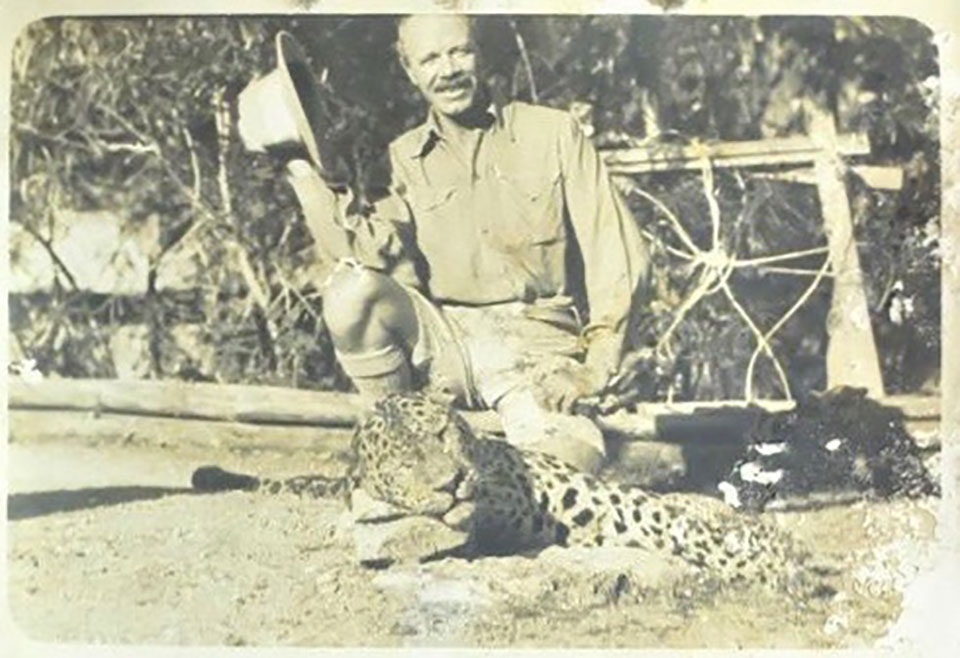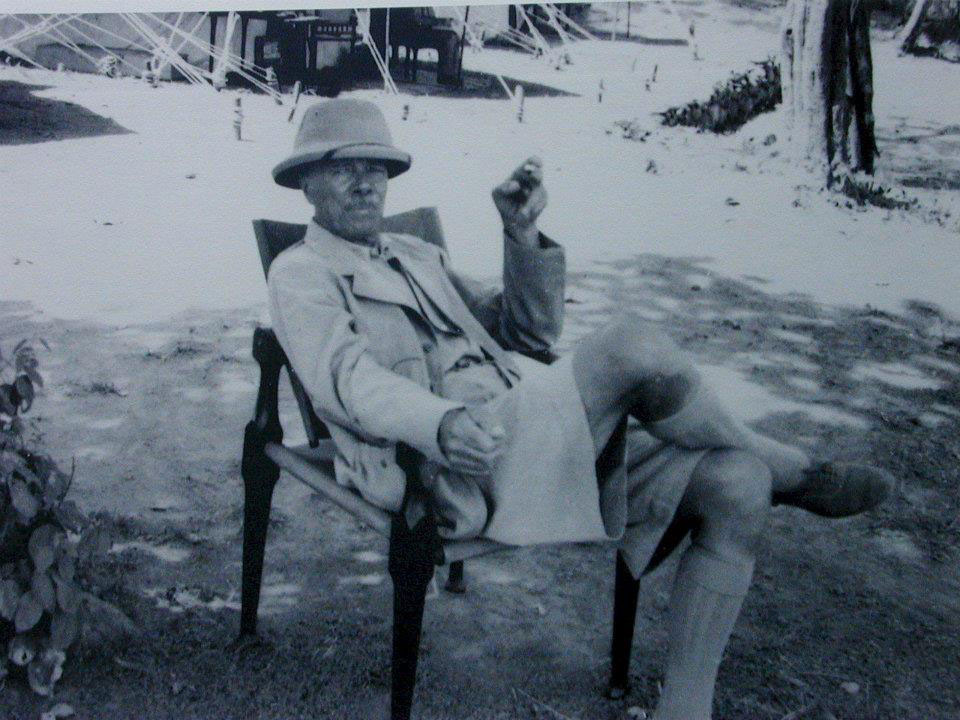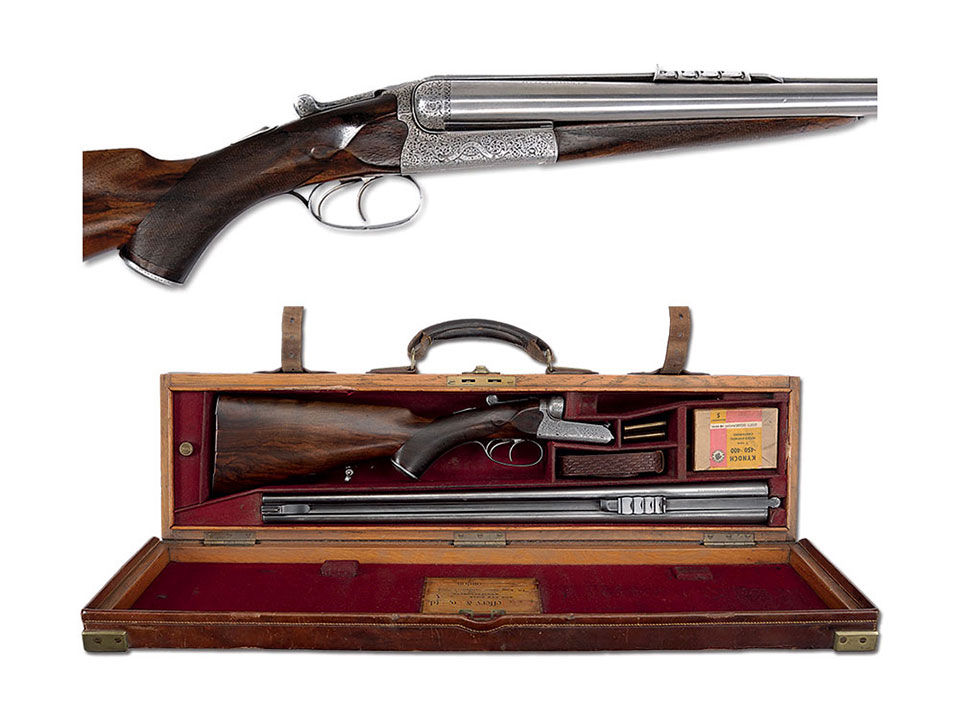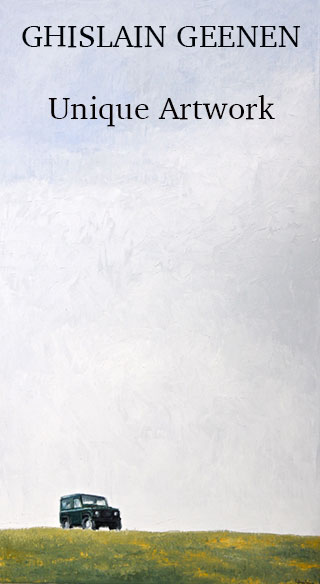This is one of several letters discovered in a provincial auction in April 2021.We have transcribed them and will publish them all, in installments, over the next few issues.
This first installment is from a letter Jim Corbett wrote to his friend Sir William Ibbotson in 1925, while on the trail of the man-eating leopard of Rudraprayag. It is published in full, unedited. It has been re-typed from the original, which is by manual type-writer, on flimsy paper.
Rudraprayag, 17th October 1925.
My Dear Ibbotson,
I sent you a few hurried lines yesterday by your man who was anxious to get back to Puri, and am giving you details now, which I know will interest you, all of that has happened since I got here on 11th. I wired you on 9th from Karenprayag saying I would arrive at Rudraprayag the following day, but being a bit used-up and this last March a hot one, I stayed the night of 10th near Shevanand and came on the next morning.
I interviewed the Patwari** on my arrival and hearing from him that the last kill had taken place at Ketri I spent the rest of the day in prospecting the West bank of the river. On the tract that is called Jhula Road, I found the two day old scratch marks, of a leopard.I sent for the Petwari on my return and asked him to assist me in getting at least four goats.
The goats were duly produced next morning (12th) and in the afternoon I served them out in likely places along the Jhula Road. The goat I hoped most from was tied where the forest track joins the Jhula Road, a short distance from the bridge.
I sat on a tree near it as long as I could see and when I went back next morning (13th) I found it had been killed and more than half of it eaten. Great efforts had been made to break the cotton rope, but it had held, as it was not my intention that the great should be taken off the track. The other three goats had not been touched. There was nothing but my own conviction to show that the killing had been done by the man-eater and these connections could be proved by a sit-up.

There was thick jungle above and below the kill and if it was an ordinary leopard it would come out at the usual time, at about sun down, and if the man-eater it would come late or not at all. There nothing happened until about 9 p.m. when some animal jumping down on the road near the kill, dislodged a stone that rolled down towards the tree I was sitting in.
The animal stayed near the the kill for a few minutes and appeared to nose it then went off in the direction of the bridge. It was quite dark and impossible for me to see anything, but I could follow the animal’s movements by the bemer plants that I had strewn near the kill for that object. (Bemar is a small plant with long seed pods, dry at this time of year, that rattle at the slightest touch.)
That night the man-eater crossed the bridge, a goat tied up on 14th where the previous one had been killed was not touched. On 15th I set out to visit Ketri and inspect the Jhula at Shevanand on my way back but half way there I changed my mind and made back for Rudraprayag.
Across this track I decided to put a gun trap, using my .275 and 28-bore for the purpose.
A mile from the bridge I met a man sent by the Patwari to tell me a kill had taken place at Chutti. After Breakfast accompanied by the Patwari and Kanungo I started on the four mile climb to Chutti. The kill was in a little nala running through fields a hundred yards from the village. In repeated visits to the kill the leopard had made a track on the right bank of the nala. Across this track I decided to put a gun trap, using my .275 and 28-bore for the purpose.
When the trap was ready I found that the pressure required on the trigger strings to discharge the guns was greater than the leopard under normal conditions was likely to exert, however there was the possibility of driving him into the trap if I could frighten him when he was facing in the right direction and on this chance I banked.
To give me something to aim at with my .450 I placed a white stone on the near side of the nala and in line with the kill. On the bank of the nala and thirty yards from the kill there was a walnut tree with a haystack in its branches. In the middle of the stack I made a place to sit in.By 6p.m. everything was ready, guns nicely masked from the off side, safety catches off and with a final look round to see nothing had been forgotten i climbed into my nest.

At 6.30 a thunder storm burst right overhead and in a minute I was wet to the skin.; however that didn’t matter much for I was already wet from the four mile climb. At 7 the rain stopped and ten minutes later I heard a stone drop in the nala a little below the kill and at the same moment it came on to rain again.
The rain coming from the North had caught him before it reached me and in hurry for shelter to my haystack he had taken the *nala where it was a bit wide and had dislodged a stone. Some hay had drifted off the stack when I was climbing up and in this he made himself comfortable. Then for an hour or more we sat within six feet of each other with the advantage in his favour for wile he could move about and was was quite dry and warm, I had to sit tight, was wet to the skin and was freezing in the cold wind that was blowing.
All this time there was the most brilliant display of lightning I have ever seen and more than once the tree appeared to be in danger of being struck.. About the middle of the storm I heard two men passing 50 yards above us and admired their courage at being out at that hour ( I learnt afterwards that one of them was your man with the electric light).
he dashed off the kill and growled when he pulled up 60 or 70 yards away.
At 8 the storm gave over for good and and a little later the leopard jumped down into the lower field re-crossed the nala and approached the kill by the path he had made the previous night. To make sure of his firing the trap I had put up two trigger springs , he evidently got his head between the strings and took fright for he dashed off the kill and growled when he pulled up 60 or 70 yards away.
I knew he would get over his fright in time and half an hour later the white stone suddenly disappeared . I had not counted on this move in the game, the white stone was there to give me something to set the sights on when I heard him eating and with it gone it would be impossible for me to plant a bullet within yards of where I wanted to.
The stone appeared in sight as suddenly as it had disappeared and a second later I saw and heard the leopard coming straight towards me. Inow thought I had a good chance of shooting him as he returned to teh kill., but unfortunately he dd not go back the way he had come and when after intervals of 20 to 30 minutes the stone disappeared and re-appeared for the third time I made up my mind to risk a shot and as he passed under me for the third time I bent forward and fired.

The field he was in was possibly two feet wide and I put a bullet in the middle of it and all the injury I did the leopard was to clip a few hairs from his neck - kismet.
If your man had arrived only two hours earlier! I have never wanted anything as much as I wanted the light! With the lightning there had been only a short time before I could have flashed it on the leopard. For minutes at a time as he was leaning into the nala and eating and he would not have taken the slightest notice; or I could have flashed it on him as he kept passing ten feet under me and in either case - I think I could have hit him - again Kismet.
I must give you my impression of the leopard for I have told you I both saw and heard him. From the fact that he was visible on a dark night and overcast sky I conclude he is is a very light coloured animal. He did not appear to be very long but looked thickset and powerfully built.
Hearing him was the strangest experience I have ever had , I have never heard any animal’s body before and cannot in any way account for the sound. It was loud enough to be heard at thirty yards and was exactly like a woman walking in in a stiff silk dress. The field had been lately planted with wheat and there was not a leaf or blade of grass in it. No, the sound did not come from his feet but from his body.
I have never heard any animal’s body before and cannot in any way account for the sound.
As long as the leopard is on this bank I feel I have a chance, but once he crosses the river , he is gone. I have therefore taken the liberty, and hope you won’t mind, of issuing instructions to your Patwaris up river to close the Chattupipal Bridge and Shivanand Jhula at night, using thorn bushes and a lantern for the purpose; the bridge here I am looking after myself.
It’s a cold and poor game but one must do something. I sit on the bridge head and have a game net with running line fixed half way down the bridge. The idea is that if I get a shot at the leopard on the bridge and miss, as I probably will if he is moving, I will drive him into the net.
The trouble will begin when he is in the net. I cannot swarm down he iron guys with a rifle in my hand, so the job will have to be finished in the dark with a knife. There is a chance of us both going over the bridge in a mix up, however that after all is a very small chance.
I started this letter on 17th and am finishing it today 18th. Your man has gust come with your gun.. Ever so many thanks for it but I can’t think of depriving you of it. What I meant when I wrote you was that I would be glad to have any spare gun you had, not the one you yourself were using. Further, I found today that I would get a 12-bore here and I have four cartridges loaded with buckshot which I brought from Naini, so I will send the gun back at the first opportunity., and please forgive me for another trouble given.
I brought a 28-bore with me on the chance of our being able to to a chukar shoot together when you come up this way.
Thanks for your good wishes. I will do the best I can and will let you know from time to time how thinks are going.
Yours sincerely,
Sd. J. Corbett.
Notes: *'Nala' in Hindi means a brook or small stream. A 'Patwari**' was the village registrar or official.
Corbett refers to his .275. This was a Rigby Mauser. 275 bolt-action rifle, gifted to him in 1907. The .450 he refers to is a .450/.400 Nitro Express Jeffery boxlock made in 1909.

Read more in next month’s Vintage Gun Journal.
Published by Vintage Guns Ltd on (modified )



